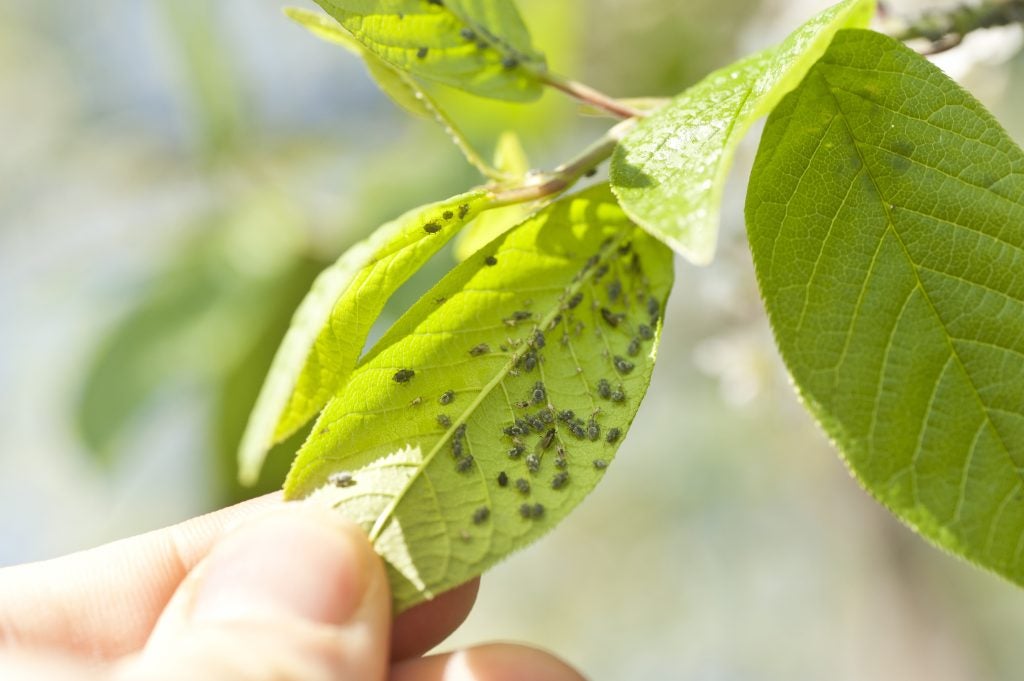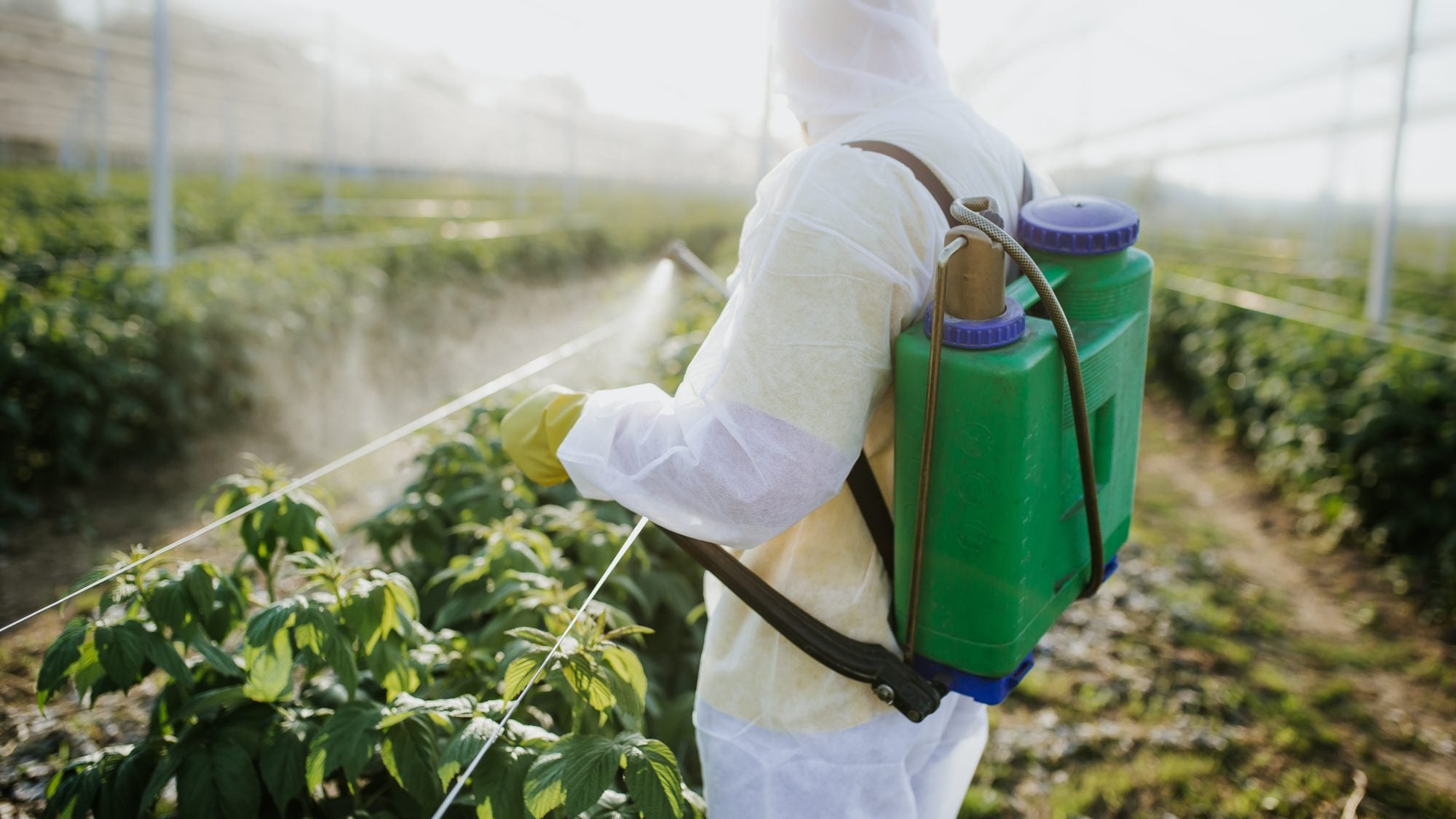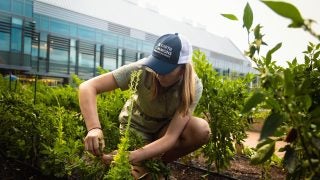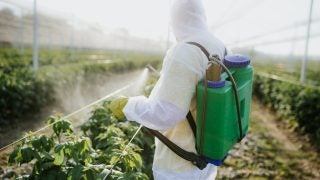Pesticides are a common part of the agricultural process to deal with pests harming crops.
In the U.S. alone, an estimated 1 billion pounds of pesticides are used every year to deal with weeds, insects and other pests.
But while pesticides can be effective at pest control, they can also pose serious environmental and health risks.

Jesse Meiller, associate teaching professor in the Earth Commons Institute, spent seven years working in the Environmental Protection Agency as an environmental toxicologist who among other duties studied the effects of pesticides on the environment.
“Chemicals in pesticides are formulated to kill something,” Meiller said. “All pesticides have the potential to cause harm to other organisms, even if those are non-target organisms that are not the intended pest.”
Discover how pesticides work, the risks posed by these chemicals and the alternative solutions farmers can take advantage of to create a more sustainable agricultural ecosystem.
Ask a Professor: Jesse Meiller on Sustainability, Pesticides and Integrated Pest Management
How do pesticides typically function?
The way that pesticides work is they usually affect an organism so that it either can’t survive by not being able to find food, reproduce or grow. So you’re affecting the population of whatever that pest is, whether it’s weeds or insects that are eating a crop.
How do most farmers use pesticides?
Many conventional farms prophylactically use pesticides before there’s a problem, but they’re doing it on a large scale to cover all their bases instead of being targeted in their use of pesticides. Many of these pesticides are broad-spectrum pesticides, which are the kind that kill many different types of organisms. So you apply those and you’re killing not just the bugs that are eating your crop, but you’re potentially also killing the pollinators that are helping to pollinate your crops.
How can pesticides cause harm to the environment?
Many of the chemicals used in synthetic pesticides stick around in the environment and also in the bodies of organisms, which specifically is known as bioaccumulation. The organisms that are exposed to them hold onto those pesticides so that when something else eats that organism, they pass on that burden of pesticides to whatever eats it.
Additionally, the rain that falls on land where herbicides and insecticides are applied can cause soil and pesticides to run off into local waterways. Organisms that live in those waterways — including fish, invertebrates and even larval stages of insects — can be exposed to these pesticides.
That’s what was happening with bald eagles and other birds of prey when DDT [an insecticide the EPA has banned] was being used. Pesticides were moving up the food chain to these high levels, and it was affecting the abilities of these large birds to build eggshells that were strong enough to withstand their weight. So the populations of these birds plummeted, and we almost lost our national bird because of the use of a pesticide.

Are there other types of pesticides that are not as harmful?
Narrow-spectrum pesticides are more targeted to a specific type of pest or a group of pests. You can avoid some of those environmental problems of harming other organisms that are unintentionally affected by broad-spectrum pesticides.
What are the limitations of narrow-spectrum pesticides?
To use narrow-spectrum pesticides, you have to know a lot about the pests. You have to know about its lifecycle and when it reproduces. For example, if you have a narrow-spectrum pesticide that acts on an organism’s ability to molt or move from one stage of life to another, you need to understand what those stages are so you can use the pesticide at a time that is going to be the most effective.
Using narrow-spectrum pesticides also requires more careful application and sometimes additional protective gear. The farmers need to be well-versed and certified to be able to use these pesticides effectively and safely on their farms. So the more variety of pesticides that you use, the more training and understanding you need to have of those chemicals. But, narrow spectrum pesticides still have other unintended effects so avoiding the use of pesticides is best.
Are there other solutions that minimize pesticide use altogether?
Integrated pest management (IPM) is an ecologically based way to deal with pests. IPM’s goal is to maintain agricultural production while still dealing with pests and decreasing pesticide use.
IPM requires having a thorough understanding of the crop, the pest and the surrounding environment. Education is key in understanding what is affecting the crops and the life history and characteristics of the insects or the weeds affecting the crops so that you can manage them properly by targeting that specific pest.
What alternative strategies does IPM offer to deal with pests?
Some controls including the appropriate use of fertilizers can ensure the soil is as fertile as possible, giving the crop a more competitive edge over weeds. Other controls like spacing the plants to be more dense can shade the ground and make emerging weeds less competitive and less likely to germinate in the soil.
The timing of planting crops is really important. For example, planting corn in early May might prevent corn borer pests from feeding on the corn ears because the corn can be in a later stage of development and better able to withstand the insects when they peak in the summertime.
Planting different crops on one plot of land can also be effective. Strip cropping is where in one strip of land you might have corn and then the next is soybeans followed again by corn. You could potentially at least contain a pest to one strip. It might not jump over the soybeans to the next strip of corn.
There are also biological controls like releasing a predator, parasite or disease that affects just the pest, but these can be time-consuming and expensive and also sometimes result in unintended consequences on native organisms which might be affected by them as well. Farmers can also use genetic controls such as introducing artificially sterilized males into a pest population.
How do these more sustainable practices contribute to a greener and healthier planet?
Sustainable farming promotes the biodiversity of the surrounding ecosystems. Since pesticides can harm organisms that are not pests, including pollinators, birds, fish, native plants and many others, it is best to avoid the use of pesticides whenever possible. This will also allow ecosystems to retain their resiliency in the face of climate change and other stressors that they face due to human impacts. Safer soil, water and food systems support not just our environment, but also our own health.




